SCAN - How to avoid distracted driving on the water
Foundation Findings #56 - June 2017
What Is SCAN?
Search the area all around your craft. This is a 360-degree examination of everything on the water around your boat. Distances away will close or open depending on your speed or the speed of the observed boat or object. The faster you're operating, the farther out you'll need to search.
Concentrate on what you're seeing. Is it a boat? What type? What is it doing? What is its relative speed? Is it a stationary object? Drifting or anchored? Things can happen fast out there, so these are questions you must consider while you look at the various observed boats or objects.
Analyze what you're watching. Is it closing in on your position or going away from you? Remember, if the object you're observing is at a constant bearing with decreasing range (meaning you're getting closer to it, and its relative position to you is not changing), it is on a collision course. If it's another boater, do you believe he or she sees you? Never assume you're seen by other boat operators, who may or may not be distracted. Determine this by the way and direction they're operating. Analyze how far away the boat or object is and how fast it is closing the distance between you and it.
Negotiate. What are you going to do? Slow down, turn away from the boat or object, and head in a different direction? Remember the Navigation Rules. Learn the proper action to take while meeting head on, crossing, or overtaking another boat.
Photo Gallery
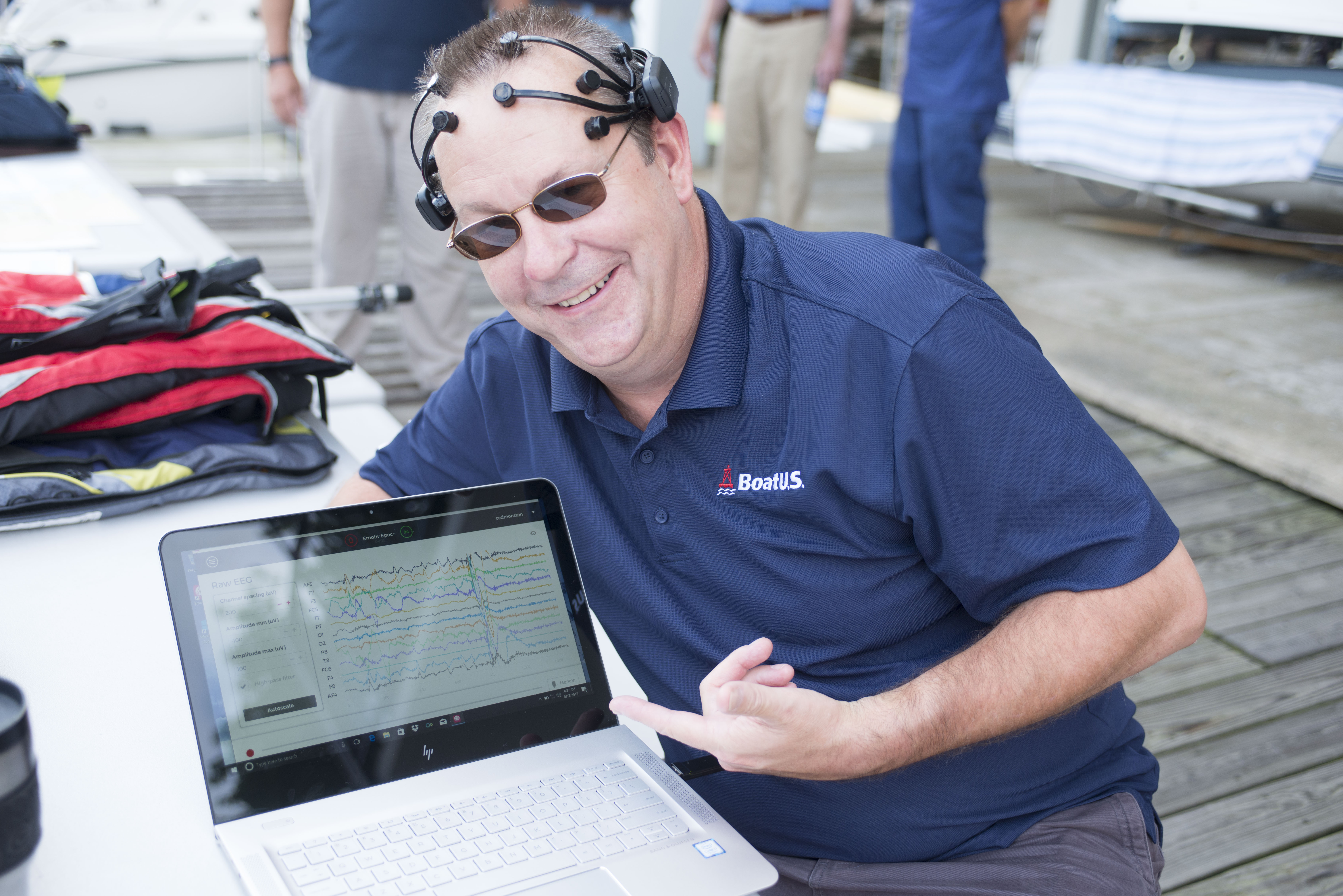
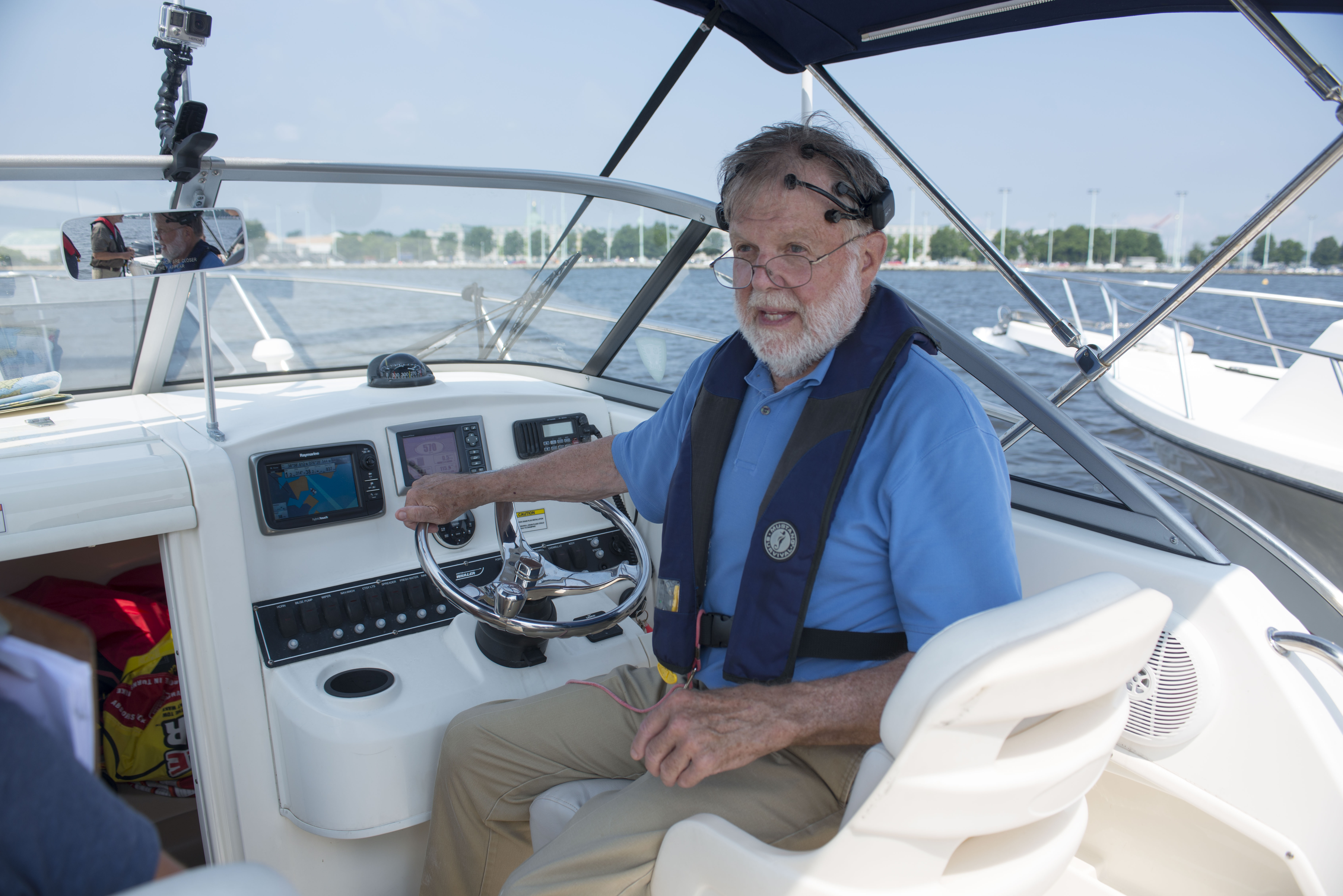
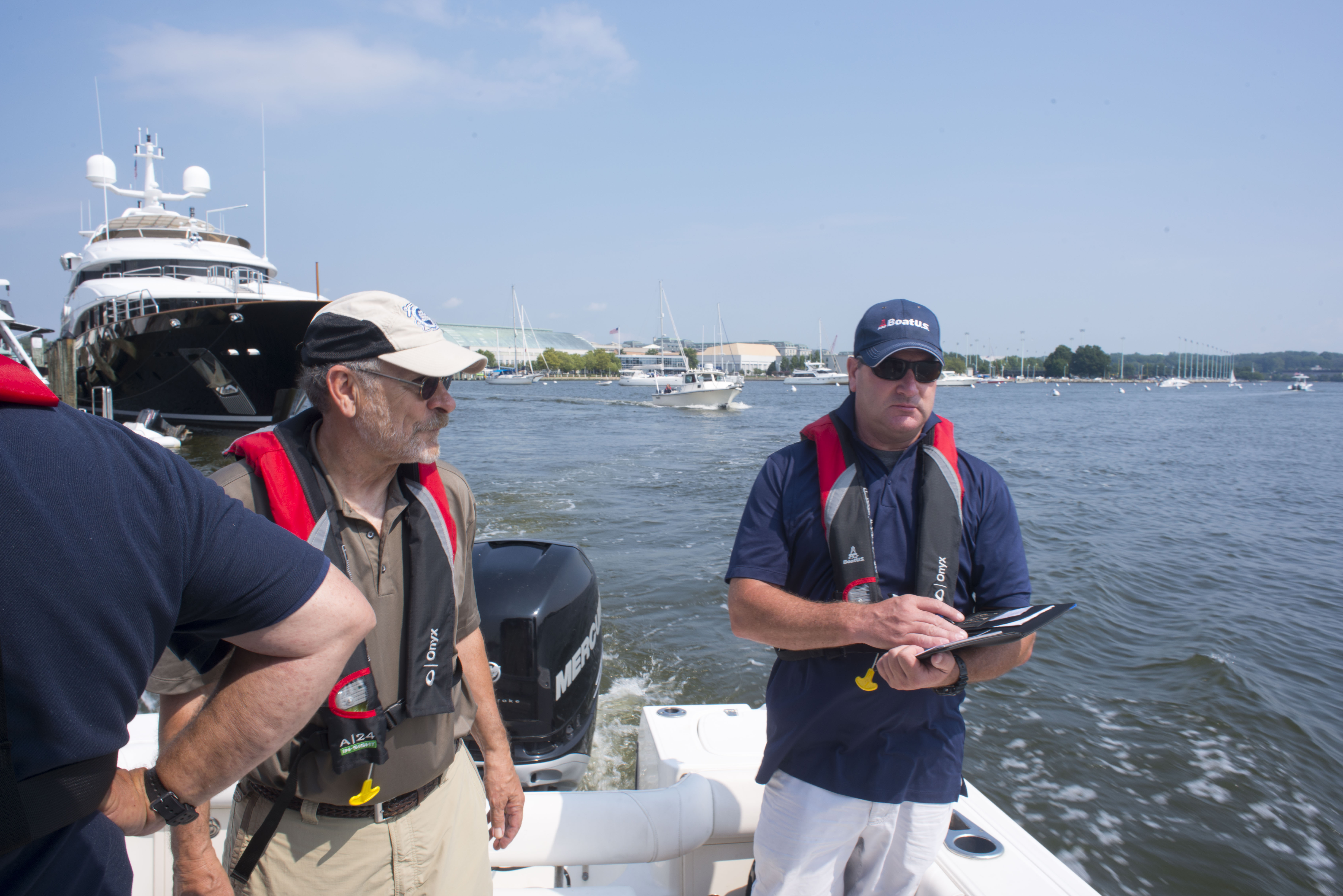
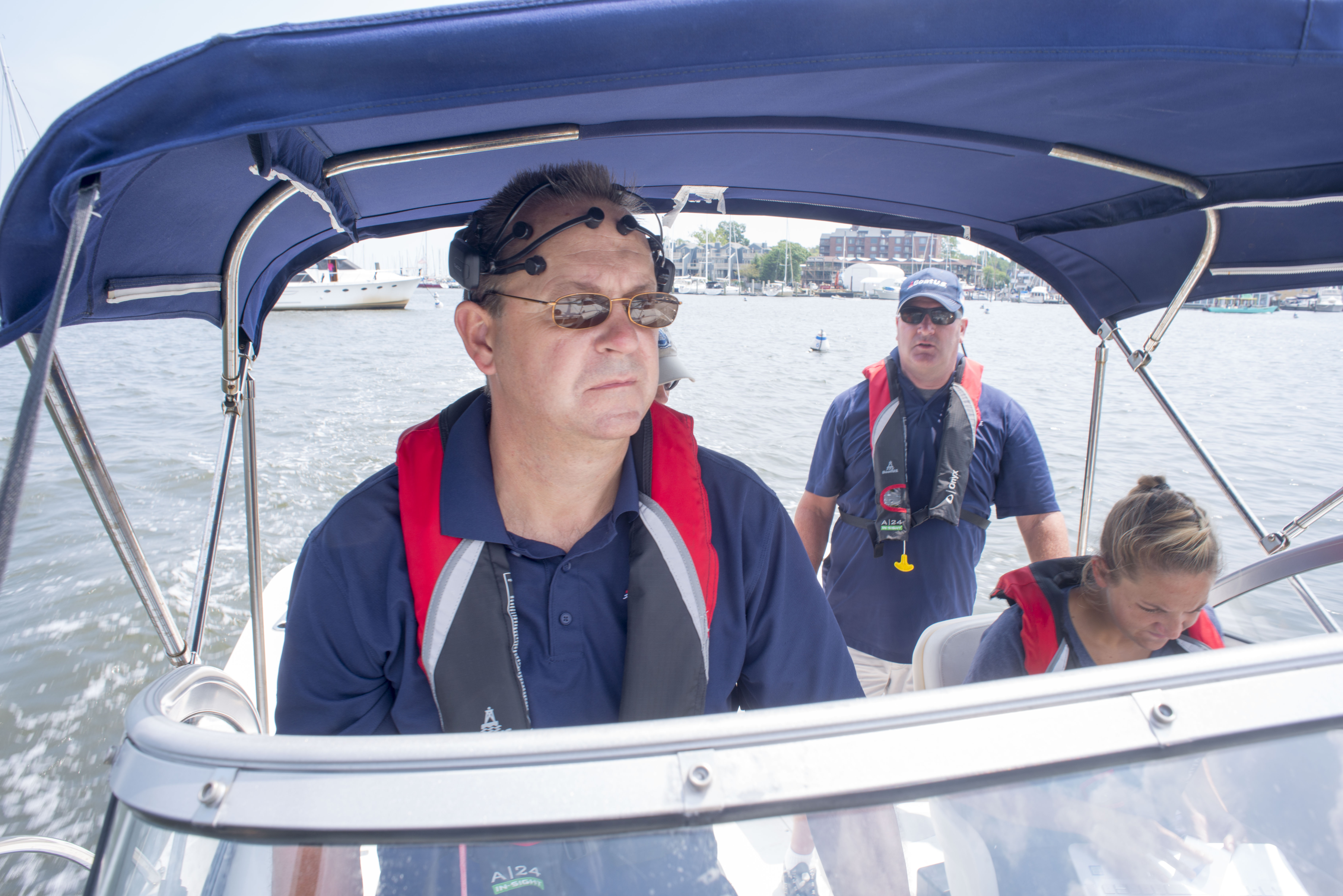
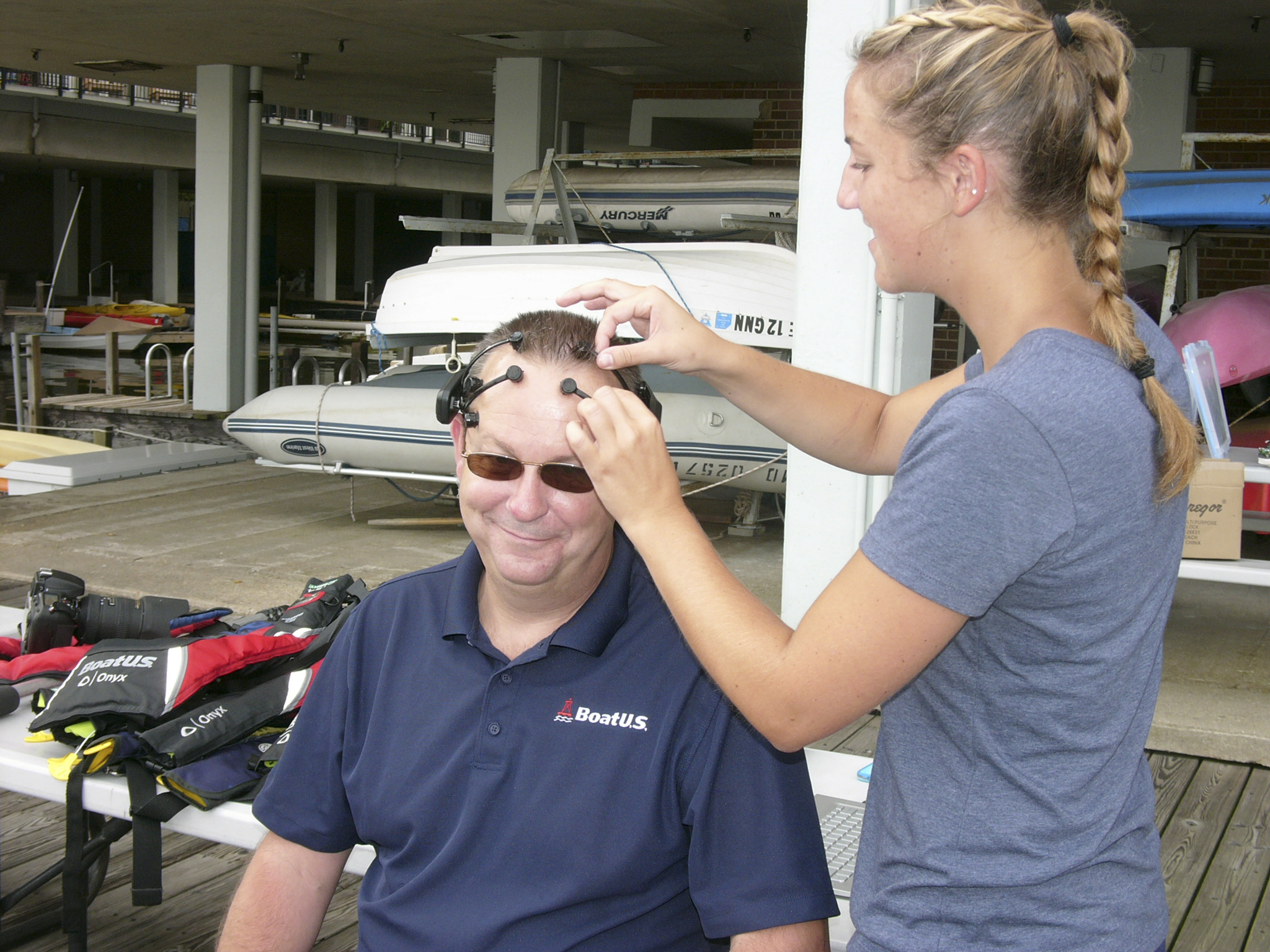
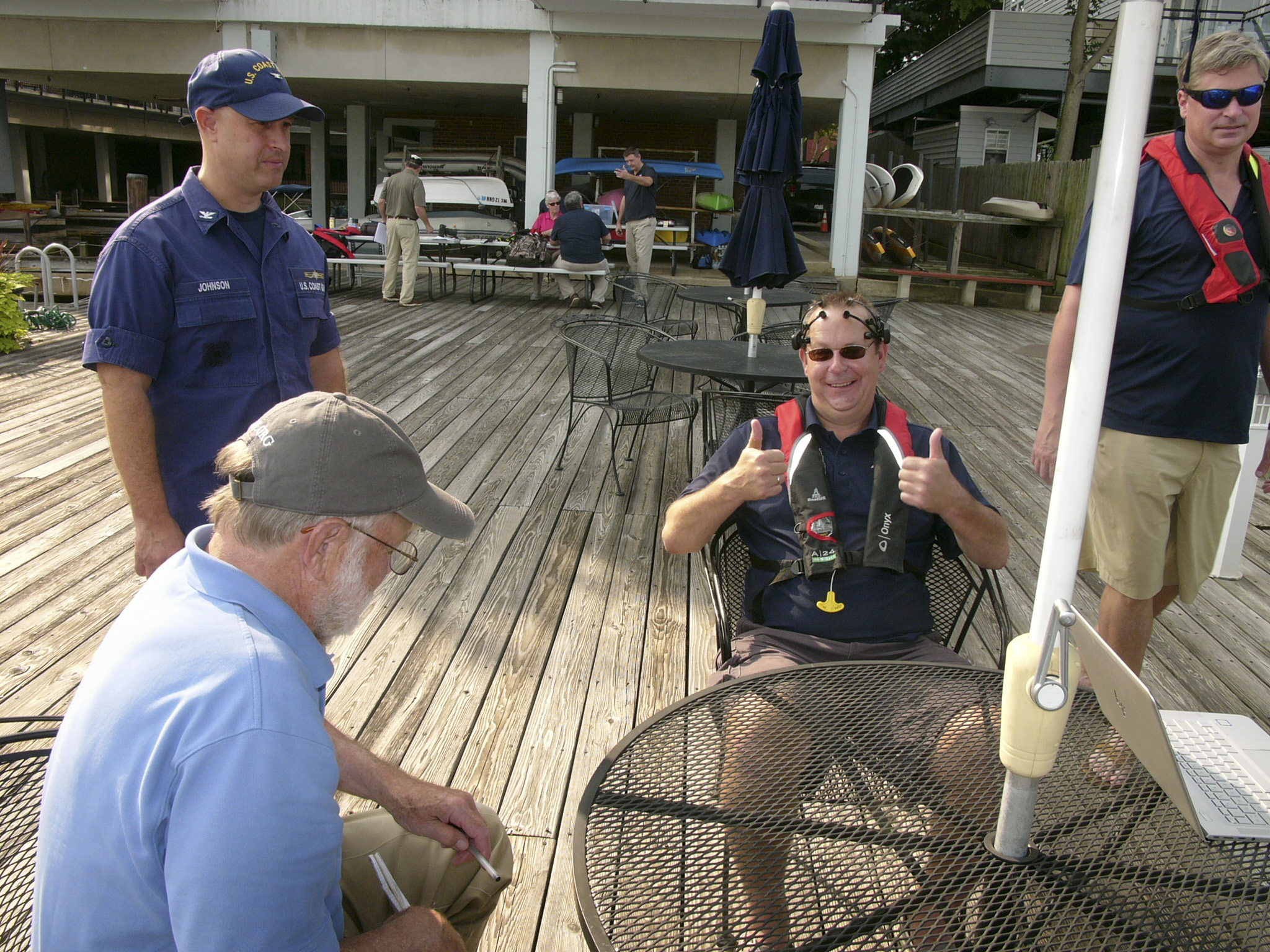
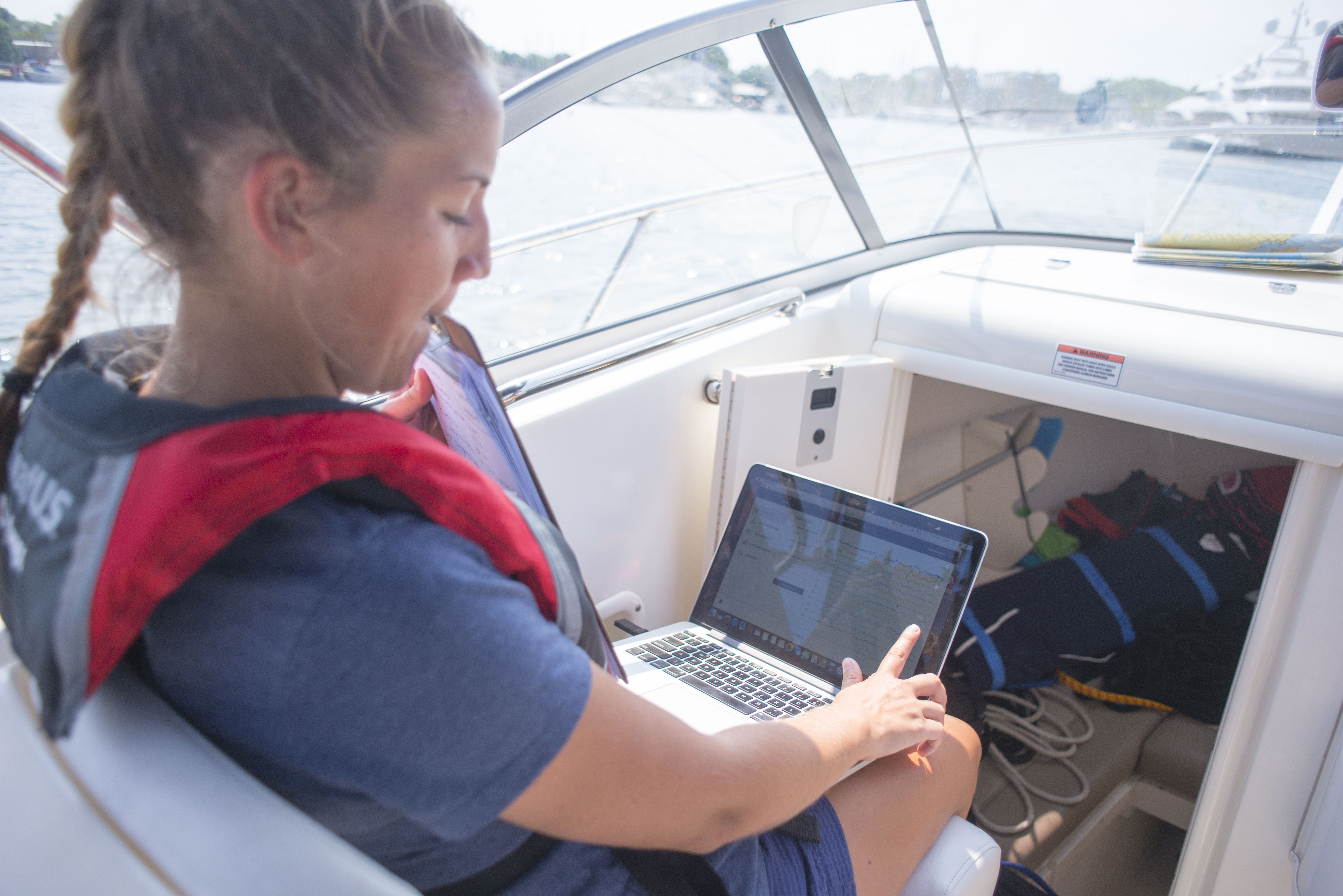
Making Brainwaves
Test results included charts of our brain activity at each stage. The "typical" level was interrupted with spikes upward showing "high focus," and downward spikes indicating "distraction events," which were correlated with notes from the onboard observer indicating what we were encountering at that time on the water. Across the board, irrespective of the level of experience, all four of us significantly improved our attention, as indicated by our brain activity.
The results of this preliminary assessment suggest that maintaining proper lookout procedures, as specified through SCAN training, is effective in decreasing distraction and increasing vigilance in small-boat operators.


